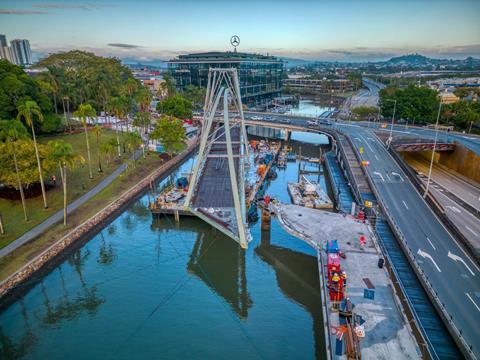Forecasts about the construction sector vary from region to region, with some analysts predicting large-scale spending and growth, and others wary of rising costs.

According to ING Think, the USA’s construction sector weathered the 2023 banking stresses and ongoing high interest rates but 2024 will be more challenging. “Financing conditions remain restrictive, and political uncertainty is on the rise with US and Mexican presidential elections. High government deficits further limit the scope for support for the sector,” it said.
Emphasising that point, on May 1,2024 the USA’s Federal Reserve confirmed that it is holding interest rates steady at 5.25-5.5 percent, the highest rate in two decades, citing persistent inflation in the economy. The Federal Reserve’s target inflation rate is 2 percent; it peaked in June 2022 at 9.1 percent.
Stress is being felt at all levels of the construction industry in the UK. Almost half of the country’s construction firms are facing financial struggles, according to trade association Federation of Master Builders (FMB). The association, which represents small and medium sized enterprises primarily, stated in its latest State of Trade Survey for Q1 2024 that 44 percent of respondents said that their business is on track to make a loss or fall below expected margins, based on the first three months of 2024.
An increase in material costs over the past quarter prompted 65 percent of those surveyed to increase prices. Brian Berry, chief executive of the FMB, said: “Last year was challenging for small builders across the UK, and while Q1 of 2024 has shown stabilisation, it is clear the situation remains concerning. He added that data seen for workloads and enquiries are settling in negative figures, similar to those seen between 2010 and 2013, when the UK economy was particularly impacted by austerity measures and limited spending power.
“There are clearly deep-rooted problems within the UK economy that need addressing,” he said.
Globally, however, Willis Towers Watson (WTW) forecast that infrastructure construction output will grow at an annual average rate of 5.2 percent in 2024 to 2027, following the expansion of 10.7 percent in 2023.
“In 2024, activity and growth in the construction industry will be led by large scale government spending supported by private investment in infrastructure (both aging and new), including roads, railways, airports, ports, and urban mobility projects. In the energy sector, construction growth will predominantly be in renewables due to the pace of population growth, the increasing need for accessible and reliable energy supply and to comply with countries’ decarbonisation plans,” it said in its Global Construction Rate Trend Report for Q1 2024.
Heavy investment in manufacturing in the technology sector will see projects commence to construct semi-conductor and giga factories as well as datacentres. It did note, however, that construction activity will likely retract in 2024 in some countries in Europe and Australia, as many projects are put on hold due to the increased construction costs.
These rising costs are a result of economic factors, including high inflation, elevated interest rates and labour shortages. Those factors have already pushed several projects to the right, particularly in the wind energy sector.
















